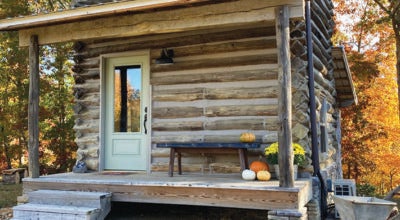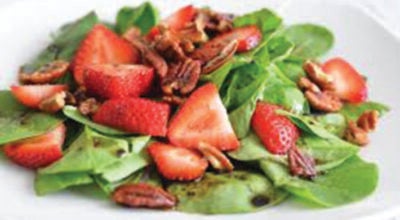Iconic honey bun born in Greensboro
Published 8:15 am Thursday, March 18, 2021
|
Getting your Trinity Audio player ready...
|
By Maeve Sheehey
UNC Media Hub
The humid smell of chlorine lingers in the air at the pool while you sweat through yet another North Carolina summer.
The air-conditioning blasts you at the grocery store as you pass aisles of shimmering, highly-processed snack foods.
The sound of a wrapper crinkles as the vending machine’s metal coil slowly relinquishes its wares.
At the center of it all: a honey bun.
Introduced in Greensboro more than six decades ago, this plastic-encased pastry remains a fixture of gas stations, grocery aisles and snack bars. It’s also a fixture of so many childhoods, especially in North Carolina.
The gritty sugar glaze is delicious or cloying, depending on personal taste — but regardless, it evokes deep-seated nostalgia for consumers as they hearken back to a time when they didn’t bat an eye at more than a dozen grams of sugar in one package.
“Honey buns are kind of a metaphor,” William Dameron, who grew up in Greensboro, said, “for that sweet, sort of innocent time.”
For Dameron, the honey bun evokes memories of standing in front of a snack stand at a swim meet as a kid, not long after microwaves were invented.
It was the ‘70s, when the swimmers thought sugar — sometimes Jello mix, sometimes a frozen Snickers bar, sometimes a honey bun — would provide an added boost of energy during races.
A honey bun is a calorically dense, endlessly sugary snack with swirls of pastry covered in glaze. Dameron ordered one and the girl working the counter laid it on a plate before popping it in the microwave. He watched the plastic around the honey bun balloon as it heated up.
“And they were so good that way,” he said, “because they were just so sugary and warm.”
The rush of a championship swim meet, combined with the rush of anticipation for a warm honey bun, was unmatched for Dameron — “kind of magical,” even. He’s moved to Maine, but next time he visits his mother in Greensboro, he’ll transport back in time by eating a honey bun.
•
Despite its status as an iconic childhood snack, North Carolinians tend to be surprised by its Greensboro roots.
Glenn Perkins, curator of community history at the Greensboro History Museum, figured it out when he saw a post on the City of Greensboro’s social media in January. The post said the honey bun was invented in the city by Howard Griffin, of the Griffin Pie Company, in 1954. Perkins had no idea.
“I wrote to them and I said, ‘What are you guys talking about? Send me what you know,’” he said.
Since then, Perkins and his Greensboro Public Library colleague, Morgan Ritchie-Baum, found sources to piece together more. They found a 1972 newspaper article, citing that Mrs. W.L. Griffin began frying pies in her kitchen to sell in drug stores in the 1920s.
By the 1940s, Griffin Pie Co. was operating in Greensboro — renamed Griffin Baking Co. in 1954, under proprietors Howard L. and Mrs. Mary H. Griffin. General consensus is that honey buns were introduced into production in ‘54.
Honey buns later became part of Flowers Foods and haven’t been made in Greensboro for years. In the 1980s, an office building moved into the location where the now-defunct Griffin Pie Co. factory on West Market Street once stood.
•
Lex Alexander, who grew up in Charlotte during the ‘60s and ‘70s, also associates honey buns with memories of pool snack bars on days spent roasting in the sun. But it wasn’t about winning a swim event for him.
His family belonged to Olde Providence Racquet Club, a sprawling complex with a pool. While he was there, he got a honey bun from the snack bar almost every day, usually in the afternoon.
Sitting poolside and slathered in sunscreen, with no obligations and a honey bun in tow, was its own sort of bliss.
“It was just something about the combination of the setting and the sunshine that just made it all perfect,” he said.
The habit didn’t last into adulthood, but Alexander still bought the occasional honey bun from a vending machine, including the one at the Greensboro News and Record, where he worked for 22 years.
•
As for Georgie Kerber, who grew up in Cherokee County, the memory of honey buns brings him back to the classroom.
As a fifth-grader, Kerber ate a honey bun almost every day. One day, while heading to lunch, he realized he’d left one in his math class. He ran back to grab it, muttering: “Where is my honey bun?”
He left the room without realizing his teacher was still in there. She was taken aback, thinking Kerber was talking about her.
“Did you know I was in there?” she later asked.
“No, I was looking for my honey bun,” he told her.
But Kerber and his teacher kept the nickname, calling each other “honey bun” from then on.
The honey bun’s story is alive in these personal histories, tiny landmarks on the map of a North Carolina childhood.
That doesn’t mean the history of its creation in Greensboro is pieced together quite so comprehensively. For now, historians rely on news clippings and scattered accounts of Griffin’s wares to unravel what happened since the advent of the honey bun.
The story isn’t neatly processed and packaged, wrapped in cellophane and ready for consumption — but the honey bun is. And its clear plastic casing holds more than honey-flavored swirls and airy pastry.
It holds the hazy, distant memory of coming of age in North Carolina.
It holds a little piece of Greensboro history.
Maeve Sheehey is a senior business journalism major at the University of North Carolina at Chapel Hil. From Baltimore, Md., she interned at Bloomberg News on the U.S. Economy team and wrote for N.C. Business News Wire. She is the enterprise director at The DailyTar Heel, where she spearheads the newpaper’s investigations and longform journalism.





